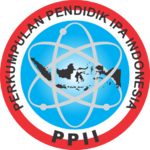Difficulty Of Student Learning In Physics Lessons At The Middle School Of State 14 Bengkulu City
Abstract
Penelitian ini bertujuan untuk mengetahui tingkat kesulitan belajar siswa siswa di SMPN 14 Kota Bengkulu. Penelitian ini dilakukan pada semester genap pada tahun pelajaran 2019/2020. Metode yang digunakan pada penelitian ini adalah metode deskriptif kualitatif. Sampel diambil secara purposive sampling. Teknik pengumpulan data diperoleh melalui instrumen kuesioner yang kemudian dianalisis secara deskriptif. Hasil penelitian menunjukan persentase skor rata-rata sebesar 70,15 yang termasuk ke dalam kategori sedang. Sedangkan rata-rata untuk tiap indikator yang teridentifikasi menyebabkan kesulitan belajar siswa pada mata pelajaran fisika diantaranya faktor fisiologis (jasmani/panca indera) sebesar 74,5% (Kategori tinggi), psikologi 69,78% (Kategori sedang), aspek sosial 68% (Kategori sedang), sarana dan prasarana 58,75% (Kategori sedang), metode belajar 77% (Kategori tinggi), dan guru sebesar 77,17% (Kategori tinggi).
Downloads
References
Adams, W.K. 2010.Student Engagement and Learning with PhET Interactive Simulations.Online First. DOI 10.1393/ncc/i2010-10623-0, diakses 20 Mei 2015.
Adegokse, A.B. 2010. Integrating Animations, Narratives, and Textual Information For Improving Physics Learning. Electronic Journal of Research in Educational Pschology, 8(2) 725-748.Alfieri, L., Brooks, P.J., & Aldrich, N.J. 2011. Does Discovery-Based Instruction Enhanc Learning? Journal of Educational Psychology. DOI: 10.1037/a0021017.
Alrsa’i, M.S & Aldhamit, Y.A. 2014. The Effect of Computer Simulation on Al-Husein Bin Talal University Student’s Understanding of Elecricity and Magnetism Concepts and their Attitudes towared Physics Learning. International Journal of Educational Research and Technology. 5(1), 54-60. Diakses 20 September 2014.
Amiroh, D. 2014. Pengaruh Visual Scaffolding Berbasis Think Pair Share terhadap Prestasi Belajar Fisika ditinjau dari Pengetahuan Awal Siswa SMAN 9 Malang. Tesis. Malang: Program Pascasarjana Universitas Negeri Malang.
Armstrong, K. & Retterer, O. 2008. Blogging as L2 writing: A Case Study. AACE Journal, 16(3) 233-251, http://search.ebscohost.com), diakses 20 Oktober 2013.
Asthana. 2010. Multimedia in Education-Introductin, the Elements of, ducational Requirements, Classroom Architecture and Resources, Concersns, http://encyclopedia.jrank.org/articles/pages/6821/Multimedia-in-Education.html, diakses 21 Februari 2014.
Azis, Y.M. 2013. The Effectiveness of Blended Learning, Prior Knowledge to The Understanding Concept in Economics. Educational Research International, 2(2).
Bill, D.T. 2005. Popular Theory Supporting the Use of Computer Simulation for Experiential Learning. https://fenix.tecnico.ulisboa.pt/downloadFile/3779576747044/article3.pdf, diakses 23 Mei 2014.
Cahyani, M.D. 2013.Pengaruh Media Simulasi PhET terhadap Peningkatan Prestasi Belajar Siswa dalam Konsep Pembiasan Cahaya. http://repository.upi.edu/2339/1/S_IPSE_0901949_Title.pdf, diakses 2 Mei 2014.
Chun-Yen, C. James, P.,B., Ming-Chao, L., Yi-Chun, C. 2007.Assessing Tenth-Grade Students’ Problem Solving Ability Online in the Area of Earth sciences. Computers in Human Behavior, 23, 1971–1981, https://pdfs.semanticscholar.org/ad2f/9a8fe6a0a8def638542b49a45721beaffb93.pdf., diakses 10 Desember 2013.
Walid, A., Sajidan, S., Ramli, M., & Kusumah, R. G. T. Construction of The Assessment Concept to Measure Students' High Order Thinking Skills. Journal for the Education of Gifted Young Scientists, 7(2), 237-251.
Authors who publish with ISEJ: Indonesian Science Education Journal agree to the following terms:
- Authors retain copyright and grant the ISEJ: Indonesian Science Education Journal right of first publication with the work simultaneously licensed under Creative Commons Attribution License (CC BY 4.0) that allows others to share the work with an acknowledgment of the work's authorship and initial publication in this journal.
- Authors can enter into separate, additional contractual arrangements for the non-exclusive distribution of the published version of the work (e.g., post it to an institutional repository or edit it in a book), with an acknowledgment of its initial publication in this journal.
- Authors are permitted and encouraged to post their work online (e.g., in institutional repositories or on their website) before and during the submission process, as it can lead to productive exchanges, as well as earlier and greater citation of published work.












